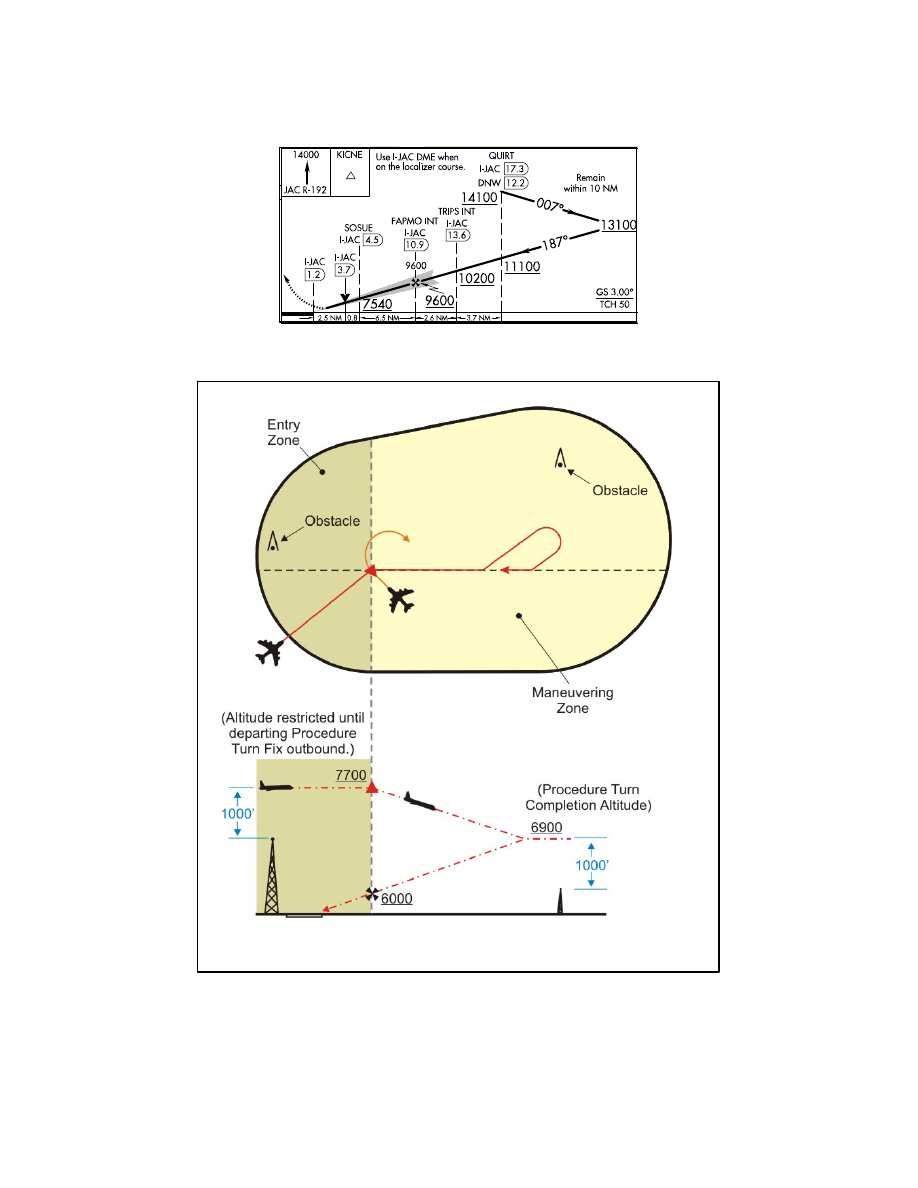
AIM
4/20/23
FIG 5
−
4
−
17
FIG 5
−
4
−
18
3.
When the approach procedure involves a procedure turn, a maximum speed of not greater than 200 knots
(IAS) should be observed from first overheading the course reversal IAF through the procedure turn maneuver
to ensure containment within the obstruction clearance area. Pilots should begin the outbound turn immediately
after passing the procedure turn fix. The procedure turn maneuver must be executed within the distance specified
in the profile view. The normal procedure turn distance is 10 miles. This may be reduced to a minimum of 5 miles
Arrival Procedures
5
−
4
−
34